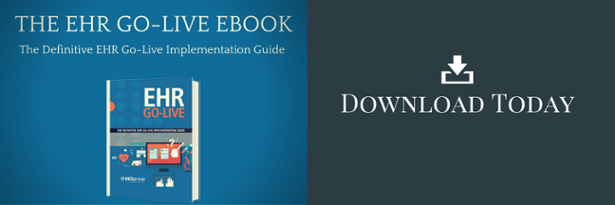Meaningful Use Milestones: The Road to Attestation
At HCI, our clients are partnering with us for the expert healthcare consulting and resources they need to help them achieve Meaningful Use and overcome IT barriers. With highly skilled experts in every area of EHR implementation, HCI’s team can help hospitals and practitioners meet immediate Meaningful Use needs while positioning them for the stages and changes to come.
In this post, the HCI Group's Steven Due, an expert in Meaningful Use attestation, shares his insights on how to best prepare for and execute a successful Meaningful Use project.
The Road to Meaningful Use is Complex
Designing and building EMR systems around government requirements requires not only an understanding of Meaningful Use criteria and measures, but also a thorough understanding of caregiver processes and workflows.
Working with staff to make sure workflows are built into their daily documentation is key, since meaningful use reports pull directly from EMR data which is documented by caregivers. Including end users in the process from start to finish will ensure compliance with Meaningful Use documentation and requirements. Caregiver involvement should include Nursing, Ancillary Departments and Physicians.
Hire/identify a Project Manager for the Meaningful Use Team
A project Manager familiar with EMR functionality and Meaningful Use Criteria should be considered as they have the best skill set in making sure you achieve Meaningful Use Attestation and receive your allotted reimbursement. The process should include, Workflow Assessment/analysis, System Build, Testing, Training and Implementation/Go-live with full end user support. A project team should be developed and include a Project Manager, a senior leader who is able to make key decisions, Quality team members, Clinical Informatics, Caregivers and Super Users.
Conduct a Meaningful Use Workflow Analysis
Workflow Analysis is the foundation of not only the implementation of your EMR, but key in understanding how to structure documentation to meet Meaningful Use. The government certifies EMR Software to meet Meaningful Use; this means the vendor’s software has been certified based on how they have designed the software and developed Meaningful Use reporting capabilities. The vendor therefore is not able to modify these reports based on individual client needs, since they were certified on how they were built when the government initially certified them. Therefore, clients need to make sure reportable data is documented in the fields designated by the software vendor. If data is not able to be pulled from existing documentation fields into the designated fields, documentation and workflows will need to be developed, built and trained to meet the needs of Meaningful Use.
Work with Staff to Make Sure Workflows are Built into their Daily Documentation
The system design should be based on Workflow analysis outcomes and be built by someone that is already familiar with the organization’s EMR system build and functionality. It is important to build Meaningful Use functionality into your caregiver’s daily workflows and pull data from existing fields as much as possible. Should additional documentation be required, it is important to integrate the new fields into existing workflows. Whenever possible, data should pull from existing documentation into Meaningful Use Reports. An alternative to having nursing staff and physicians taking on additional documentation is assistance from ancillary departments in completing Meaningful Use documentation. HIM, CDI and Quality team members, just to name a few can be utilized in chart review and documentation to assist in Meaningful Use compliance.
Functional Testing of the Meaningful Use build can happen concurrently with the build. This will allow for adjustments to take place in a timelier manner. Once your Meaningful Use build and functional testing has taken place a thorough integrated testing should take place utilizing your Clinical Informatics staff and Super Users.
Meaningful Use Training & Go-Live
Training staff members is another key component of your Meaningful Use implementation, as this will improve your compliance with Meaningful Use. Meaningful Use percentages are only as good as good as the documentation completed by caregivers.
The initial Go-Live of Meaningful Use functionality should be supported by a command center, Clinical Informatics team members, Super Users and rounding by departmental and administrative leadership. Caregivers need to understand that this is a team effort and that they are supported at all levels.
In an ideal world, most of Meaningful Use documentation should be completed by caregivers, supported by real time documentation, not all Meaningful Use measures can be entered by ancillary departments retrospectively. Physician support is key to the successful implementation of Meaningful Use.
Achieving Meaningful Use; The Bottom line
The bottom line in making sure you achieve Meaningful Use is caregiver involvement, understanding current and future workflows, maximizing the ability to utilize current workflows and pulling in existing data whenever possible. It is important to make sure the process is a team effort and is supported at all levels of the organizations. And finally, it is important for departmental and administrative leaders to take ownership of Meaningful Use measures appropriate to their departments, monitor the results on a regular basis and follow up with team members to ensure workflows and documentation requirements are being followed.

